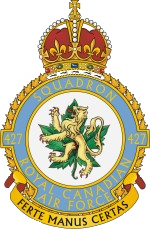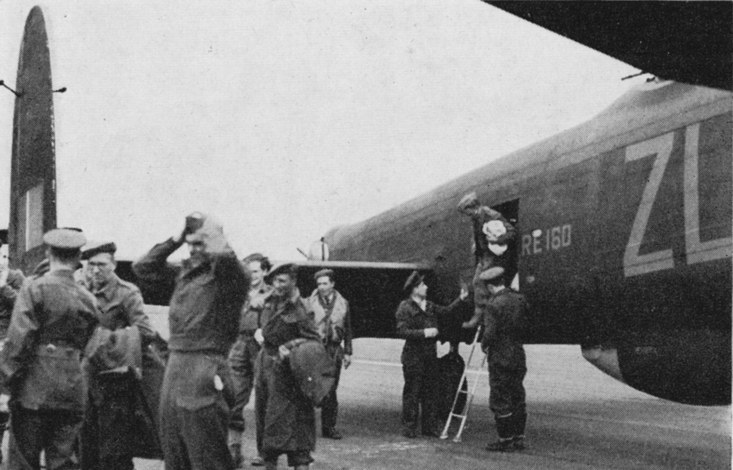 Bomber Command
Bomber Command  |
Aircrew Chronicles
|
Aircrew Losses
|
Nose Art
|
BCATP
|
Lancaster
|
Media
|
Aircrew Chronicles
|
Aircrew Losses
|
Nose Art
|
BCATP
|
Lancaster
|
Media
 Bomber Command
Bomber Command  |
Aircrew Chronicles
|
Aircrew Losses
|
Nose Art
|
BCATP
|
Lancaster
|
Media
|
Aircrew Chronicles
|
Aircrew Losses
|
Nose Art
|
BCATP
|
Lancaster
|
Media
No. 6 Group and the Canadian Squadrons
Bomber Command


|
|
On 7th November, 1942, 427 Squadron was formed at Croft as part of No. 4 Group. Two months later on 1st January, 1943, the unit was transferred to No. 6 (R.C.A.F) Group. Similar to many other Canadian bomber squadrons, the Wellington was the main aircraft employed by the unit at the beginning of the war. During it's move to Leeming in May, 1943, the squadron converted to Halifax bombers and used them for the majority of the war. In March of 1945, the Lancaster replaced the Halifax as the squadron's aircraft and served for the remainder of operations.
The crest symbolizes how the Canadian squadron was formed in England by displaying a lion (representing England) with a maple leaf behind. The motto "Ferte manus certas" ("Strike Sure") is labeled beneath. Planes whose fuselage carried "ZL" were part of this squadron. Aircrew from 427 Squadron dropped over 8,528 tons of high explosives, incendiaries, and mines over enemy territory from January, 1944, to April, 1945. The squadron logged 3,277 operational sorties, with over half of them occurring in 1944.


